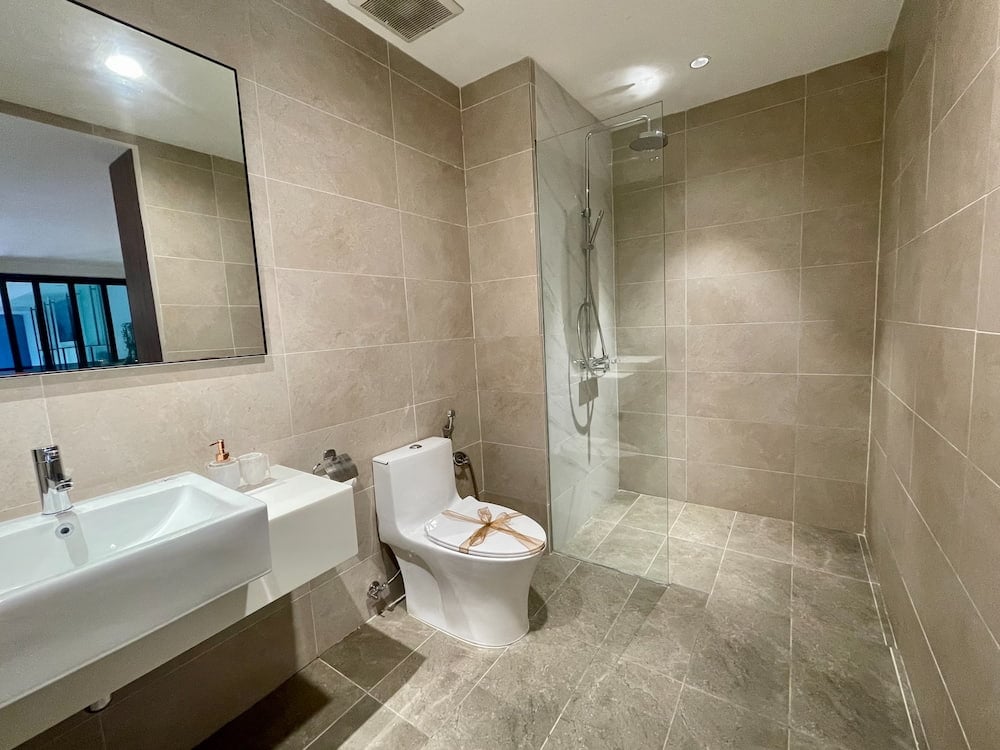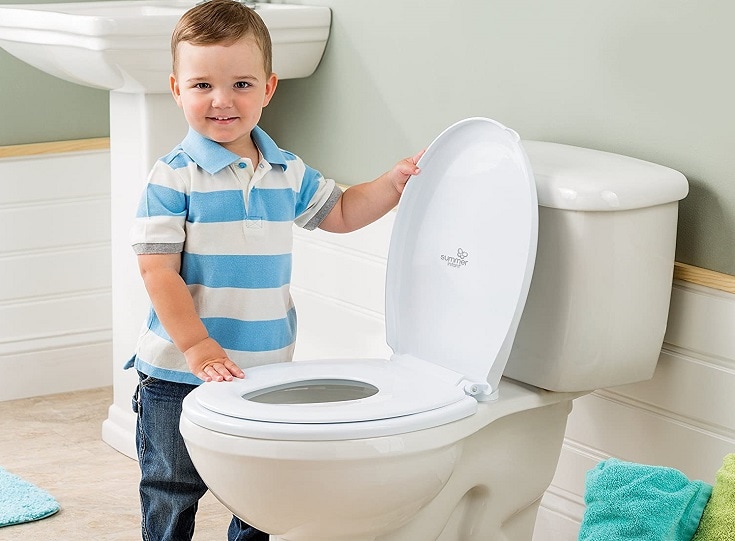My Toilet Makes Noise When Not in Use: 5 Types & Solutions
-

- Last updated:

Do you often hear strange noises emanating from your toilet while not in use? These situations are not only scary but can be frustrating, especially when trying to sleep in the middle of the night.
Strange wailing, whistling, or even hammering noises from your toilet will be unsettling if you have never experienced them before. It is usually the first sign that your toilet is not functioning properly. Several issues can cause loud noises in your toilet. These range from typical toilet leaks to the more severe water leaks that can flood your house in a matter of hours.
However, the three most common toilet issues are caused by calcium deposits, leaky toilet valves, and faulty fill valves. If these issues are not solved promptly, phantom noises will be the least of your worry. You may end up spending more than you budgeted for on water bills.
We have compiled a list of possible noises from a toilet to help you with the diagnosis. We have also included the possible causes of the phantom noises and their solutions.
The 5 Common Types of Noises from a Toilet
1. Whistling or Squealing
The whistling or squealing sound is often evident after flushing a toilet. This high-pitched sound is produced when the toilet tank is refilling. While it may be loud and irritating, it doesn’t necessarily mean your toilet system is damaged beyond repair.
Causes
Generally, whistling sounds are caused by a faulty fill valve or ballock valve in your toilet. A squealing sound is produced when air leaks through either the fill valve or the ballock valve. If the fill valve is not airtight, either water or air will leak from it. Also, in the case of a ballcock valve, a washer could get loose, allowing air to leak out.
Solution
To fix the whistling sounds, ensure that the ballcock and the ballcock valve are secured into position and that everything is tightly shut. If the ballcock or the ballcock valve is damaged, you can fix it. However, since these components are cheap and readily available in a hardware store, it is better to replace the faulty parts.
The same applies to the slightly modern fill valves. Just replace all the components for optimum results.
2. Hammering Noise
Also known as the toilet hammer, this is a hammering sound usually produced when a toilet is not in use. As the name suggests, this noise literally sounds like someone hitting your toilet or the pipes underneath your toilet.
The loud vibrating noise usually indicates problems with the toilet shut-off valve. This is a small knob located on the wall behind your toilet. A shut-off valve uses rubber to isolate water, and if it loosens it can start to vibrate, creating hammering noises in the water pipes.
Causes
The hammering noise is an indicator of severe underlying issues caused when the water flowing inside a pipe suddenly comes to a stop while still rapidly flowing. The momentum of the water forces the knob to stop with a great deal of force, thus creating the hammering sound.
This mostly happens immediately or a few minutes after flushing because the toilet tank is filling up too fast. Therefore, the toilet shut-off valve must abruptly stop to prevent the toilet from overflowing and flooding your house.
Solution
A simple solution to the hammering noises is adjusting the shut-off valve to reduce the water flow. Also, consider installing a regulated fill valve to reduce the water pressure while your toilet tank is refilling. If the shutoff valve is damaged, you may have to replace it. Here is how:
- Simply shut off the water at the main house shut-off valve.
- Completely drain all the water from the pipes by opening all taps and faucets.
- Then, use two wrenches to loosen the old valve and replace it with the new one. This should stop your toilet from producing hammering noises when not in use.

3. Hissing Noise
Don’t be alarmed if you notice a brief hissing sound coming from your toilet. The sound is normally produced as the water tank is refilling. However, constant hissing is an indication that the toilet flapper is malfunctioning. This means you lose water as it slowly trickles down into the toilet bowl while never filling up. A constant hissing sound could also be a sign that water is draining into the overflow tube.
Causes
Hissing noises always come from an old or deteriorating toilet flapper. The hissing can also be heard when the fill valve or the ballcock in your toilet is not set to appropriate levels. This will allow the water to fill the overflow valve, thus causing the hissing noise.
Solution
The solution to a hissing sound is straightforward. You might not even need to outsource plumbing services because you can do it by yourself. Just make sure the ballcock is adjusted to the appropriate level, and always set below the overflow valve. To fix the toilet flapper, follow these steps:
- Turn off the water from the shut-off valve and drain the tank by flushing the toilet.
- Remove the damaged flapper by disconnecting it from the chain and flush the handle lever.
- Prepare the new flapper by removing the rings on the backside and sliding it in place over the overflow tube.
- Position the flapper appropriately and hook the ears on the pigs found on the side of the flush valve.
- Connect the flapper chain on the handle lever and adjust the length of the chain if necessary.
- Turn the water back on and test the flapper by flushing a few times and watch it move up and down.
4. Ghost Flushing
This is perhaps one of the scariest noises that could come out of your toilet. This phenomenon is often witnessed in the middle of the night and may seem like the toilet is flushing by itself. However, it has nothing to do with ghosts or spirits as some movie directors would make us believe. It has everything to do with a leaky or running toilet.
Causes
While scary, ghost flushing is a common toilet issue in most households. It also doesn’t necessarily indicate major underlying issues with your toilet. It is often caused by a loose flapper, causing water to trickle down to the toilet bowl.
If you have a slow leaking or a running toilet, the water level in the toilet tank will eventually reduce to the critical point. The float will then prompt the valve to start filling the toilet tank. This is when you may hear phantom flushing noises coming from your toilet.
In addition, ghost flushing may be a result of a tight flapper lift chain, a crashed flush valve, or the refill tube being too deep inside the overflow tube.
Solution
To determine if the flapper is the main cause of ghost flushing in your toilet, simply pour some colored water into the toilet tank, and wait for about 30 minutes to see if it leaks down to the toilet bowl. If some colored water is present in your toilet bowl, then the flapper is the problem and needs to be repaired or replaced with a new one.
Fortunately, a leaking toilet flapper doesn’t necessarily warrant replacement. It could be that there is some debris, and mineral deposits such as calcium forming underneath the flapper and on the flush valve. These mineral deposits also prevent the flapper from making an airtight seal. Therefore, cleaning out calcium deposits could help reduce ghost flushing in your toilet.

5. Gurgling
A gurgling noise may be a common occurrence in toilets. However, it is one of the most difficult issues to diagnose. Also, even if you can diagnose it, there is not much that you can do on your own. You may have to consult plumbing professionals for the correct diagnosis and the solution to the toilet issue. This is because, unlike the other four toilet noises, a gurgling sound often comes from the toilet bowl. You might even notice some bubbling.
Causes
Gurgling noises usually indicate a clogged toilet drain, vent, or even the main drain. If the vents get stuck, the air in the drain will have nowhere to escape. So, it will force its way through the bottom of the toilet bowl and out into the toilet. The air bubbles escaping through the toilet bowl are the ones that make the gurgling sound.
Calcium deposits are the main reason for clogged toilets. When the calcium forms inside the pipes, it clogs the pipes or reduces the flow. This will in turn cause the gurgling noise.
Solution
As earlier mentioned, gurgling noises are hard to diagnose and fix unless you are a professional plumber. But if you feel you have sufficient skills to fix gurgling noises in your toilet, there are two methods you can use to remove the calcium deposits from the pipes.
- You can use a high-powered steamer to loosen the calcium buildup. Steam helps soften the mineral deposits, allowing them to break off easily.
- Alternatively, you could employ the use of common and effective toilet cleaners. These include barium nitrate, glycine, and phosphoric acid. For a more natural cleaning solution, vinegar works great, though the process will be slower than when using industrial-grade chemicals. Regardless of what type of cleaner you use, ensure that you protect yourself from the health hazards posed by the fumes produced during the cleaning process.
In Conclusion
A toilet shouldn’t make any noises while not in use. However, prolonged usage may cause some toilet components to wear and tear, thus producing phantom noises, even while not in use. The most common toilet noises include gurgling, hissing, whistling, hammering, or ghost flushing in the middle of the night.
In most cases, these noises are usually an indicator of underlying issues with a leaky toilet valve, calcium deposits in the pipes, or a faulty fill valve. Yet, these telltale signs may indicate a more serious underlying issue, including a clogged toilet drain, stuck vent, or main drain.
While you may easily sort the leakage issues by adjusting or tightening the components, the entire piece may need a replacement for optimum results. However, if you notice gurgling sounds from your toilet while not in use, you may need to hire a professional for a more thorough diagnosis.
Featured Image Credit: rccf.1, Unsplash
Contents

